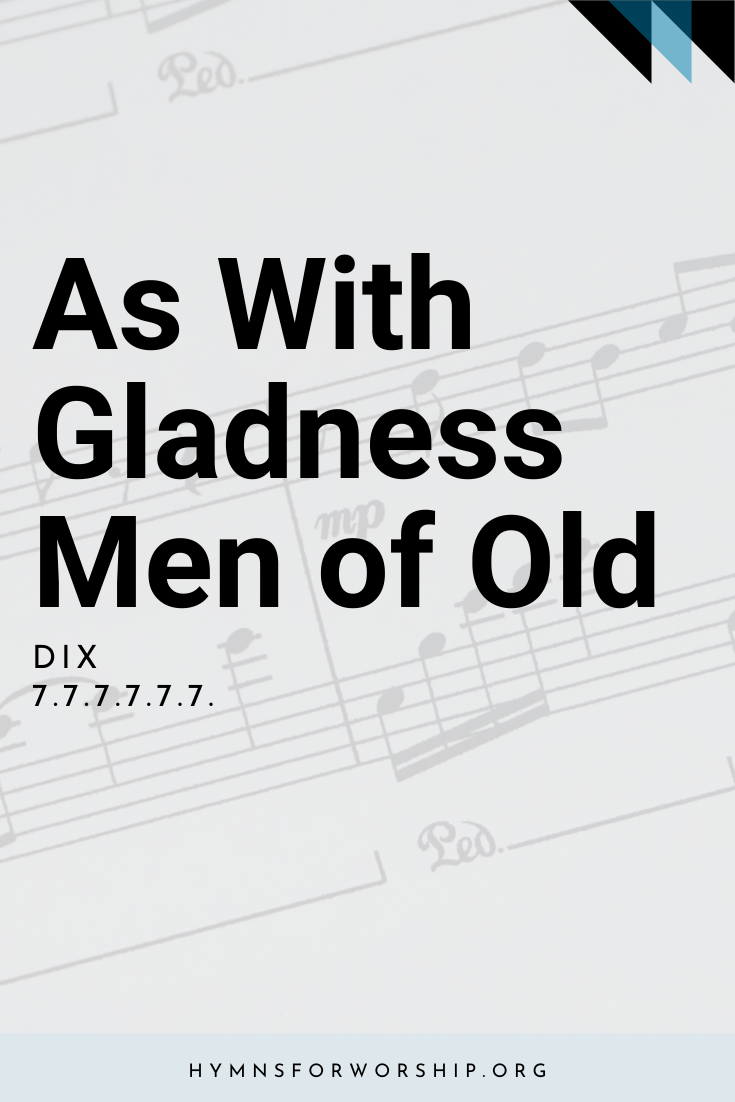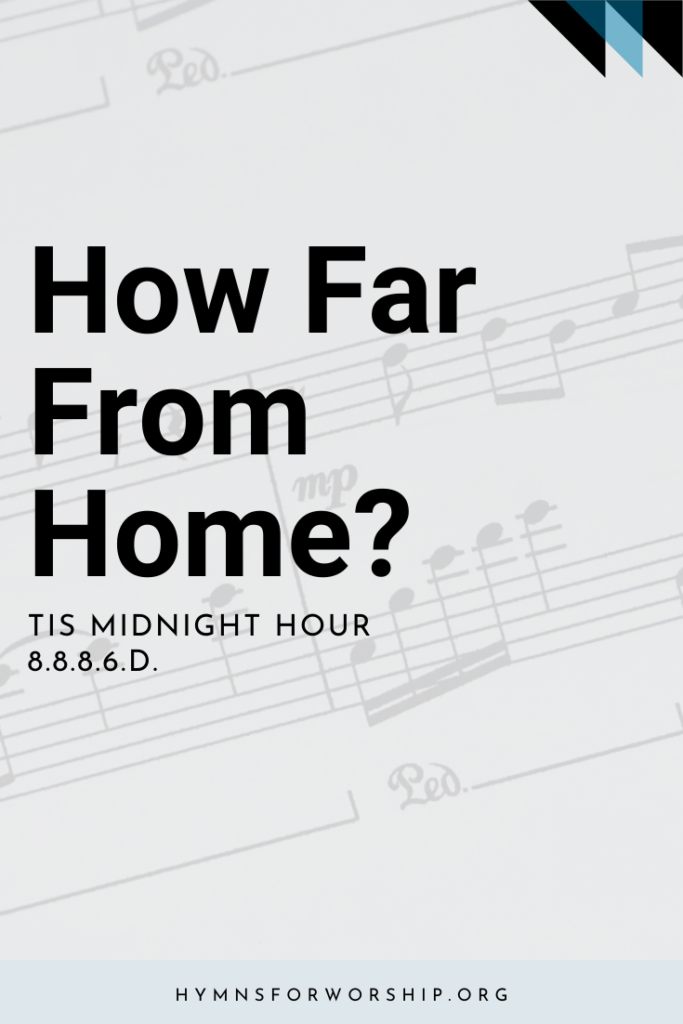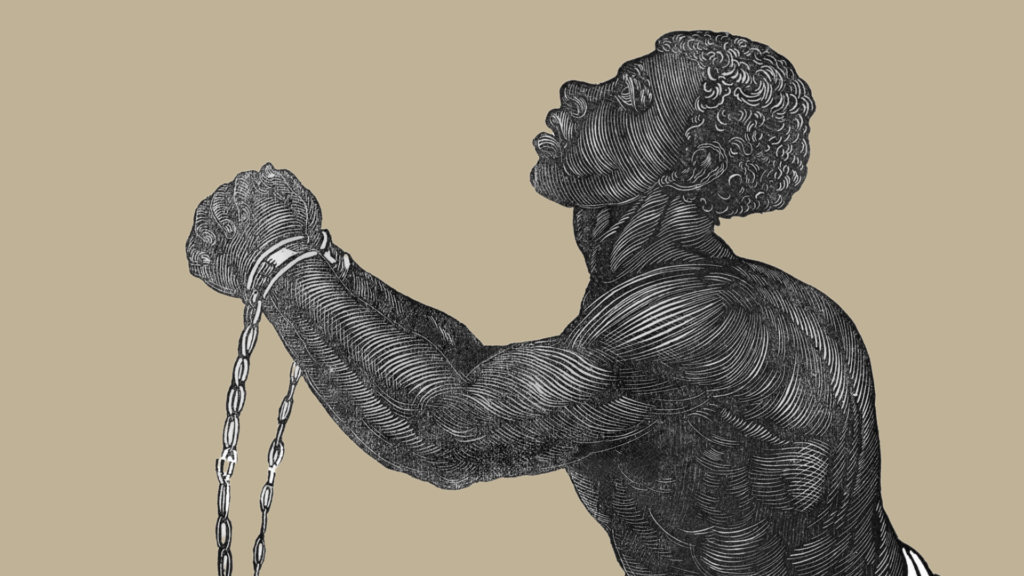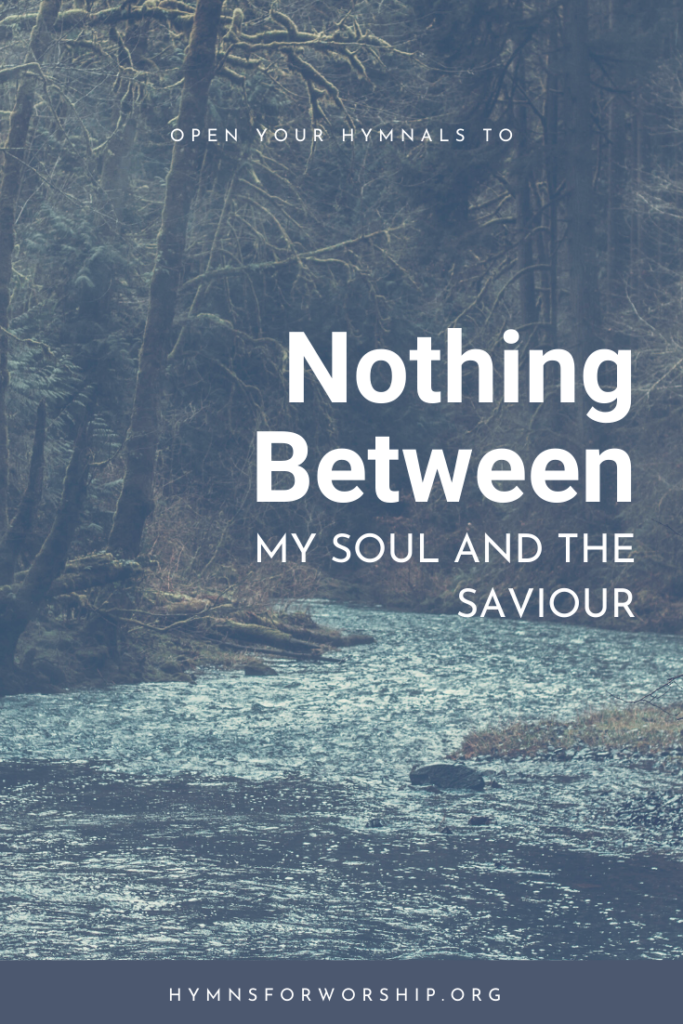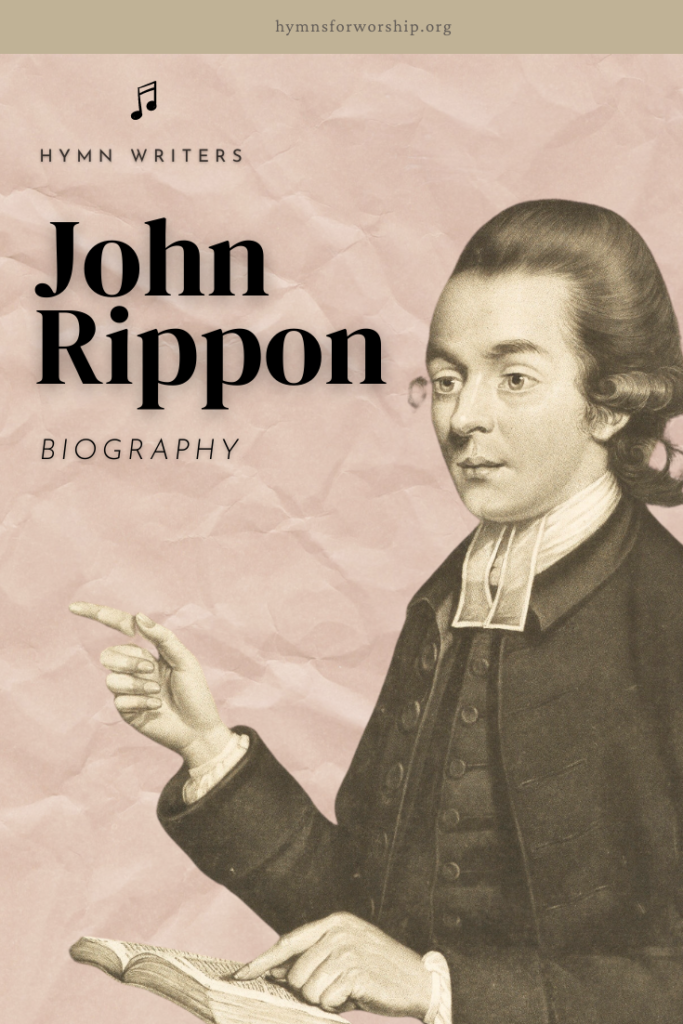JESUS CHRIST >> Birth
SDAH 123
As with gladness men of old
Did the guiding star behold,
As with joy they hailed its light,
Leading onward, beaming bright,
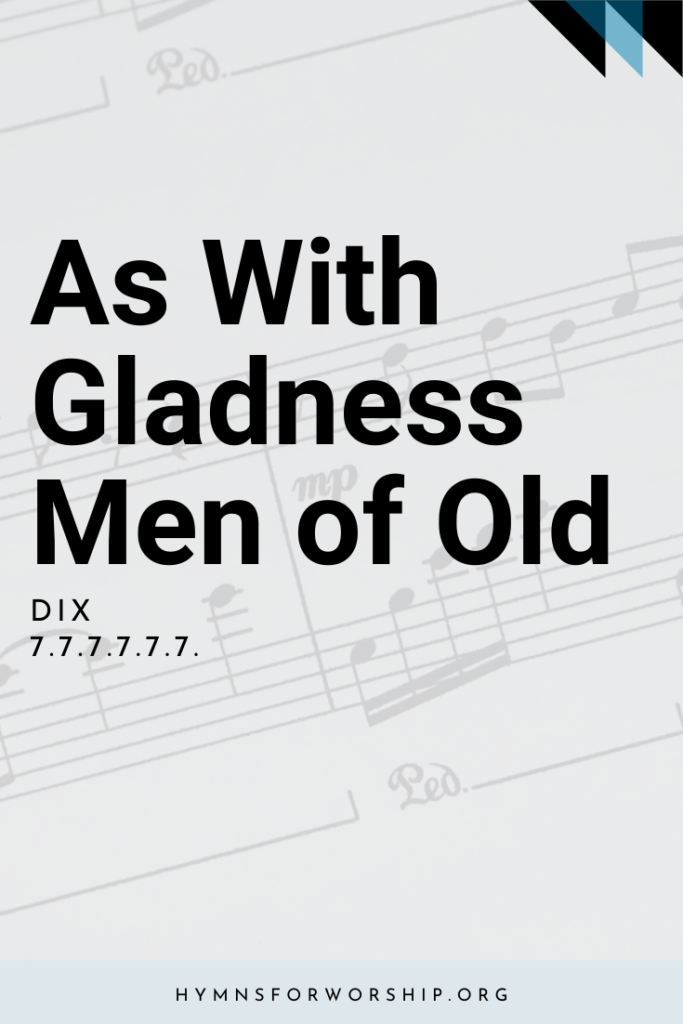

Text
1
As with gladness men of old
Did the guiding star behold,
As with joy they hailed its light,
Leading onward, beaming bright,
So, most gracious Lord, may we
Evermore be led to Thee.
2
As with joyful steps they sped
To that lowly manger bed,
There to bend the knee before
Him whom heav’n and earth adore,
So may we with willing feet
Ever seek Thy mercy seat.
3
As they offered gifts most rare
At that manger rude and bare,
So may we with holy joy,
Pure, and free from sin’s alloy,
All our costliest treasures bring,
Christ, to Thee our heav’nly King.
4
Holy Jesus, every day
Keep us in the narrow way;
And, when earthly things are past,
Bring our ransomed souls at last
Where they need no star to guide,
Where no clouds Thy glory hide.

Hymn Info
Biblical Reference
(a) Matt 2:1, 2 (b) Matt 2:11 (c) Matt 2:11 (d) Matt 6:14
Author
William C. Dix (1837-1898)
Performance Suggestions
Unison
Copyright
Arrangement copyright 1984 by Melvin West
Hymn Tune
DIX
Metrical Number
7.7.7.7.7.7.
Composer
from Conrad Kocher (1786-1872)
Arranger
Arr. by Melvin West, 1984 (1930-)
Year Composed
1838
Alternate Harmony
Harmony setting, SDAH 565
Theme
BIRTH OF JESUS CHRIST
Hymn Score
Piano Accompaniment
Notes
Get to know the hymns a little deeper with the SDA Hymnal Companion. Use our song leader’s notes to engage your congregation in singing with understanding. Even better, involve kids in learning this hymn with our homeschooling materials.
William Chatterton Dix was slowly recovering from a serious illness in his home in Bristol, England, in early 1858. On Epiphany Sunday, January 6, he was reading the story of the Wise Men and realized that there were valuable lessons implied there for our own Christian witness. Later in the day he put his thoughts into five stanzas of this hymn, which underline the present-day application of the story, that we should be led to Jesus, offer our treasure to Him, and willingly adore Him. The hymn was written to be used at St. Raphael’s Church, Bristol, and was later printed in 1861 in Dix’s Hymns of Love and Joy.
Dix was born in Bristol, England, on June 14, 1837, and was named after the famous “boy poet” Thomas Chatterton, for whom his father had great admiration. He studied at the local grammar school and then became an insurance agent in Glasgow. However, he pursued his hobby of writing, putting into verse some hymns translated into English from Greek and Abyssinian, and also some original hymns. The latter were published in his Hymns of Love and Joy, 1861; Altar Songs, 1867; A Vision of All Saints, 1871; and Seekers of a City, 1878. On retiring, he went to live with a daughter at Clifton, Bristol, and died at Cheddar, Axbridge, Somerset, on September 9, 1898. He contributed SDAH 141, “What Child Is This?” and SDAH 167, “Alleluia! Sing to Jesus!”
DIX was named after the writer of the words; Dix himself actually disliked the tune, but finally accepted the very popular combination of words and music. Composed in 1 838 by Conrad Kocher, the tune was published in Kocher’s Stimmen aus dem Reiche Gottes (Voices From God’s Kingdom) and set to “Treuer Heiland, wir sind hier” (True Savior, We Are Here). Originally there were seven lines of music, the sixth line of melody being exactly one fourth higher than line 5. SDAH’s tune was revised by William Henry Monk (1823-1889; see SDAH 50) in 1861. He simplified the ending of the fifth phrase and hence the original sixth, and omitted the original fifth line altogether.
Conrad Kocher was born in Ditzingen, near Stuttgart, Germany, on December 16, 1786, At the early age of 17 he went to St. Petersburg (now Leningrad) as a tutor, but hearing there the music of Haydn and Mozart, he decided to pursue a musical career, He returned to Germany in 181 1 and had some of his works published, which resulted in the publishing house sponsoring Kocher’s study of music in Rome. He came in touch with Palestrina’s works, and this inspired him to attempt a reform of German church music. He founded a school of Sacred song in Stuttgart in 1821, which had a wide and stimulated four-part singing in the churches. He was organist of the Stiftskirche in Stuttgart from 1 827 until retirement in 1865. The University of Tubingen honored him with a Ph.D. degree in 1852. He wrote two operas; one oratorio, (‘The Death of Abel”; some sonatas; and a treatise on church music. He also compiled a large collection of chorales. He died at Stuttgart on March 12, 1872.
The unison setting here of DIX is by Melvin West (1930Biographies). For a four-part setting, see SDAH 565, (‘For the Beauty of the Earth. “
-from Companion to the Seventh-day Adventist Hymnal by Wayne Hooper and Edward E. White

